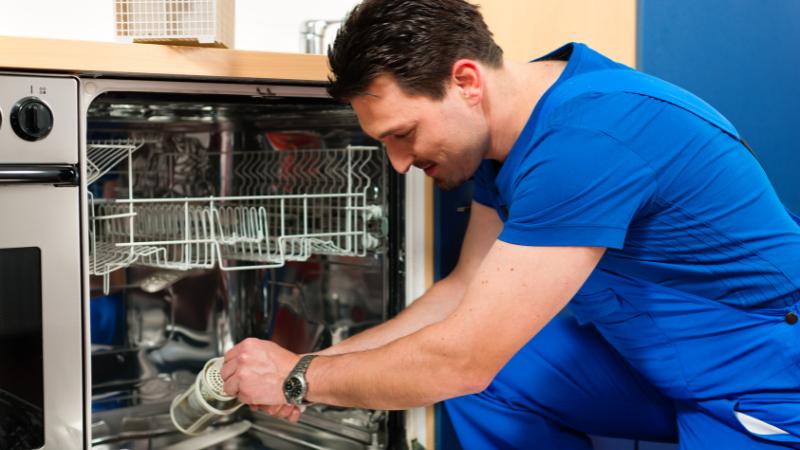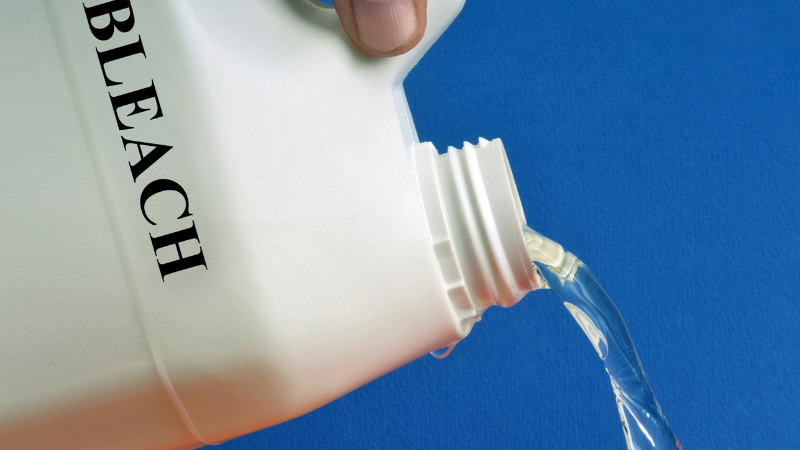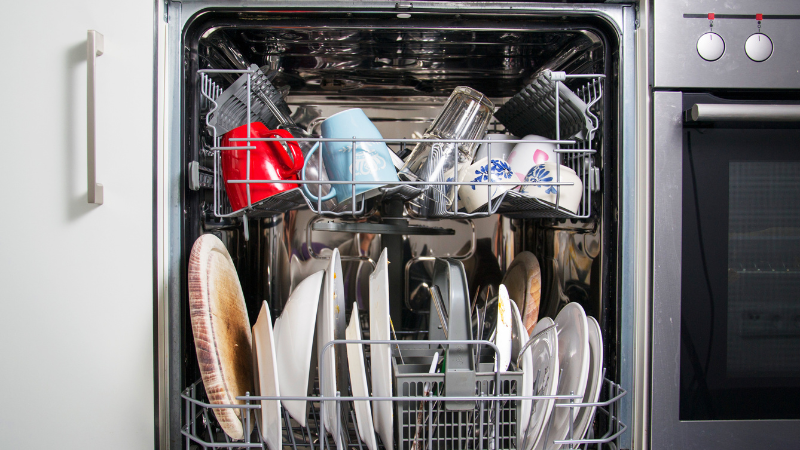Drainage problems inside the dishwasher can cause a foul smell, much like sewage. Service from a professional can eradicate the noxious odors, but homeowners can take steps to prevent the smells. Cleaning the dishwasher regularly is the primary way to rid the appliance of unwanted odors.
- How To Style Your Open Kitchen Shelving
- Unclog The Drainage System With the Best Grease Clog Removers
- 3 Causes Of Kitchen Sink Backups
- ‘Trisha’s Southern Kitchen’: Inside Trisha Yearwood’s Gorgeous Nashville Home Where She Films Her Show
- Kitchen Renovations Can Be Expensive, But Your Cabinets Don’t Have to Be
A dirty filter is the main culprit when the dishwasher reeks of sewage. The filter traps food particles, and a filter that is left uncleaned for prolonged periods of time will start to smell. A foul-smelling dishwasher is not the only outcome of a filter that is not regularly cleaned.
You are watching: Why Does the Dishwasher Smell like Sewage?
In addition to causing the sewage odors, the clogged filter is responsible for recirculating dirty water. What results is a dishwashing cycle that fails to properly clean the dishes. However, a simple remedy is available to avoid both a smelly dishwasher and one that doesn’t clean: clean the filter.
The first step in cleaning the filter is to consult the product manual for model-specific instructions to remove the part. Accessing the filter can be done by removing the lower rack of the dishwasher. Unscrew and remove the filter. Rinse with hot water and return it to the appliance.

Can the dishwasher cause illness?
Considering all the food particles, bacteria, viruses, and fungi that teem inside the nooks and crannies of the dishwasher, it’s no surprise that some people wonder if they’ll get sick. Microbes are everywhere in the environment, including inside common household appliances, like the dishwasher.
In short, getting sick from the dishwasher is a rare occurrence. Unless an individual suffers from a compromised immune system, becoming ill is unlikely. This is because the appliance is an extreme habitat—wet and dry, heat and cooler temps, low acidity and high acidity. Few microbes survive.
The most common bacteria that dwell inside the dishwasher include Pseudomonas, Escherichia, and Acinetobacter. Fungi that can live in the appliance are Candida, Cryptococcus, and Rhodotorula. These opportunistic pathogens are harmless to most people but can cause infections in people with compromised immune systems.
Can bleach be safely run through the dishwasher?

Eliminate odors from the dishwasher by cleaning the appliance once a month. Various cleaning tactics are available, from using household vinegar to baking soda. Bleach, too, can be used for an effective clean. In fact, bleach offers a deep clean, removing tough stains, mold, and mildew.
Cleaning the dishwasher with bleach requires pouring one cup of bleach into a bowl that is both dishwasher-safe and bleach-safe. Place the bowl on the top rack of the appliance. Run the dishwasher for a full cycle—and skip the dry cycle.
It’s important to note that bleach is only safe and effective if the dishwasher is not stainless steel and does not contain stainless steel parts. Bleach has the ability to damage a stainless dishwasher and its stainless steel parts. Use vinegar or baking soda inside a stainless steel unit, instead.
How is mold removed from dishwashers?
As mentioned, fungi can grow inside the dishwasher. Mold is a type of fungi, inhabiting spaces that are dark, damp, and offer an organic food source. A dishwasher provides the optimum conditions for mold spores to thrive. Worry not, however, as mold can be cleaned from the appliance.
Mold collects primarily on the rubber seal inside the dishwasher door. Sanitizing the gasket is as easy as scrubbing it with a toothbrush and soapy water. Add white vinegar to the cleaning solution for extra sanitizing power. Thoroughly dry the gasket to prevent mold from recolonizing.
Cleaning the filter is also necessary to not only remove the sewage smell but eliminate mold. Rotting food particles nourish mold spores, so it’s essential to clean the filter once per week. Additionally, scrub the filter with soapy water at least once a month to keep mold at bay.

Read more : How To Reset KitchenAid Dishwasher
Moisture attracts mold, but a dry dishwasher keeps mold away. Between cycles, ensure the dishwasher thoroughly dries. When choosing to air dry, leave the appliance door open after each cycle. If water gathers in the tub, it’s also recommended to open the dishwasher door to accelerate drying.
Another safe and effective mold infestation prevention tactic is to spray clean the dishwasher sides with a mixture of vinegar, baking soda, and water. Run the dishwasher on its hot cycle, while keeping a bowl of vinegar on the top rack and baking soda sprinkled on the bottom.
Cleaning the dishwasher on a regular basis prevents the sewage smell and mold growth. Further benefits of keeping the dishwasher spotless include cleaner dishes and an increased lifespan. If the sewage smell is an indicator of a sewage backup, however, you’ll need a sewage cleanup expert.
Specially trained and certified technicians are skilled in disinfecting residential and commercial properties that have been damaged by sewer water. Their equipment and methods are designed to handle losses of any size.
Property owners who encounter a sewer backup must act fast. Viruses, bacteria, and disease-causing pathogens contaminate sewage water and pose a threat to the health of the building’s occupants. Structural materials that absorb the sewer water can also become permanently damaged.

Professional cleanup crews respond swiftly, arriving promptly and assessing the extent of the contamination. Upon developing a restoration plan, technicians remove all sewage water using advanced machinery. They utilize powerful drying equipment, then clean and disinfect all affected parts of the property.
Once the damaged building is fully cleaned and disinfected, the odors caused by the sewage water also disappear. The health and safety of the property’s inhabitants are protected when you contact a sewage cleanup service as soon as possible after noticing the contamination.
Source: https://gardencourte.com
Categories: Kitchens


